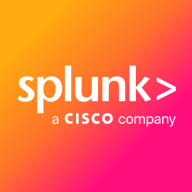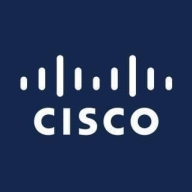

ThousandEyes and Splunk Observability Cloud are two contenders in the realm of network and observability solutions. ThousandEyes holds an edge with pricing and support, while Splunk Observability Cloud impresses with an extensive feature set and user satisfaction despite higher costs.
Features: ThousandEyes offers network layer analysis, WAN visibility, and comprehensive monitoring, providing deep insights into problem locations. Splunk Observability Cloud excels in log analytics, dashboard customization, and a single-pane view for cloud environments, enhancing troubleshooting and performance analysis.
Room for Improvement: ThousandEyes could improve application monitoring, dashboard features, and user experience. Users seek better agentless network device monitoring and integration. Splunk Observability Cloud may enhance search functionalities, UI design, and integration with third-party tools, with a need for improved AI implementations and performance optimizations.
Ease of Deployment and Customer Service: ThousandEyes is known for its excellent customer service and straightforward on-premises deployment. Splunk Observability Cloud experiences variability depending on infrastructure, with more complex cloud integrations. Support is good but needs broad knowledge for timely interactions.
Pricing and ROI: ThousandEyes is expensive but offers ROI efficiencies like rapid problem resolution and infrastructure convenience. Pricing is clear yet challenging for smaller businesses. Splunk Observability Cloud delivers strong ROI through comprehensive data analysis but is often considered high-priced, affecting its competitive stance despite robust features.
Using Splunk has saved my organization about 30% of our budget compared to using multiple different monitoring products.
Anyone working in front-end management should recognize the market price to see the true value of end-user monitoring.
I have definitely seen a return on investment with Splunk Observability Cloud, particularly through how fast it has grown and how comfortable other teams are in relying on its outputs for monitoring and observability.
On a scale of 1 to 10, the customer service and technical support deserve a 10.
They have consistently helped us resolve any issues we've encountered.
They often require multiple questions, with five or six emails to get a response.
We contacted the support team, and they resolved it within a couple of hours.
We've used the solution across more than 250 people, including engineers.
As we are a growing company transitioning all our applications to the cloud, and with the increasing number of cloud-native applications, Splunk Observability Cloud will help us achieve digital resiliency and reduce our mean time to resolution.
I would rate its scalability a nine out of ten.
Scalability with ThousandEyes is straightforward as you don't really need to scale; it's designed to monitor multiple applications, accommodating 50 or 100 applications simultaneously.
I would rate its stability a nine out of ten.
We rarely have problems accessing the dashboard or the page.
Unlike NetScout or regular agents for APM, RUM has many problems during the POC phase because customer environments vary widely.
ThousandEyes is not very stable; sometimes you have to reboot the servers to get actual results.
The out-of-the-box customizable dashboards in Splunk Observability Cloud are very effective in showcasing IT performance to business leaders.
The next release of Splunk Observability Cloud should include a feature that makes it so that when looking at charts and dashboards, and also looking at one environment regardless of the product feature that you're in, APM, infrastructure, RUM, the environment that is chosen in the first location when you sign into Splunk Observability Cloud needs to stay persistent all the way through.
There is room for improvement in the alerting system, which is complicated and has less documentation available.
Having a dedicated incident alert system for URL alerts would help manage noise and streamline operations, especially during patch upgrades.
An area where ThousandEyes can be improved is in providing more in-depth packet analysis; we've found instances where ThousandEyes indicates everything is okay, but it's actually not.
Splunk is a bit expensive since it charges based on the indexing rate of data.
It is expensive, especially when there are other vendors that offer something similar for much cheaper.
It appears to be expensive compared to competitors.
Splunk provides advanced notifications of roadblocks in the application, which helps us to improve and avoid impacts during high-volume days.
For troubleshooting, we can detect problems in seconds, which is particularly helpful for digital teams.
It offers unified visibility for logs, metrics, and traces.
I find the most valuable feature of ThousandEyes is the ability to directly see the client's exact issue.
The best features ThousandEyes offers include monitoring page load times, assessing how long it takes for an application to load, checking for packet loss and jitter, and monitoring the routing path from the user to the server hosted in the cloud or on-premises.
| Product | Market Share (%) |
|---|---|
| Splunk Observability Cloud | 1.2% |
| ThousandEyes | 3.4% |
| Other | 95.4% |


| Company Size | Count |
|---|---|
| Small Business | 20 |
| Midsize Enterprise | 10 |
| Large Enterprise | 43 |
| Company Size | Count |
|---|---|
| Small Business | 5 |
| Midsize Enterprise | 2 |
| Large Enterprise | 11 |
Splunk Observability Cloud offers sophisticated log searching, data integration, and customizable dashboards. With rapid deployment and ease of use, this cloud service enhances monitoring capabilities across IT infrastructures for comprehensive end-to-end visibility.
Focused on enhancing performance management and security, Splunk Observability Cloud supports environments through its data visualization and analysis tools. Users appreciate its robust application performance monitoring and troubleshooting insights. However, improvements in integrations, interface customization, scalability, and automation are needed. Users find value in its capabilities for infrastructure and network monitoring, as well as log analytics, albeit cost considerations and better documentation are desired. Enhancements in real-time monitoring and network protection are also noted as areas for development.
What are the key features?In industries, Splunk Observability Cloud is implemented for security management by analyzing logs from detection systems, offering real-time alerts and troubleshooting for cloud-native applications. It is leveraged for machine data analysis, improving infrastructure visibility and supporting network and application performance management efforts.
ThousandEyes is a Network Intelligence platform that delivers visibility into every network an organization relies on, whether public or private. ThousandEyes enables users to optimize application delivery, end-user experience and ongoing infrastructure investments.
With cloud, enterprises can innovate much faster, but the growing number of cloud and SaaS applications means that more apps are being delivered over the Internet. This increases dependence on the Internet, a public “best effort” network, and other third-party infrastructures, substantially reducing the ability of IT teams to predict, visualize and control operational behavior. This results in a chaotic and unmanageable IT environment, making issue resolution a time-consuming ordeal, potentially impacting reputation and revenue. ThousandEyes has innovated an approach based on an unmatched distribution of smart agents across the Internet and enterprise, providing visibility all the way to the end user. ThousandEyes gathers and analyzes massive volumes of Network Intelligence data from all of these vantage points, enabling organizations to solve even their most obscure performance problems in minutes. By using ThousandEyes in the planning and testing phases of cloud adoption, customers can also strategically identify and fix underlying problems before production deployment of business-critical applications.
The ThousandEyes solution is ubiquitous across industry sectors, and since launching in mid-2013, customers have come from a diverse set of industry sectors, which include Silicon Valley technology companies, financial services, healthcare, pharmaceuticals, retail, manufacturing and education.
We monitor all Network Monitoring Software reviews to prevent fraudulent reviews and keep review quality high. We do not post reviews by company employees or direct competitors. We validate each review for authenticity via cross-reference with LinkedIn, and personal follow-up with the reviewer when necessary.